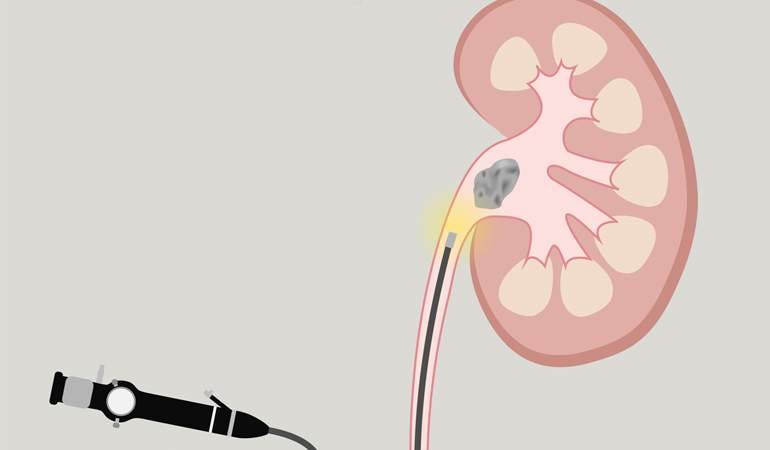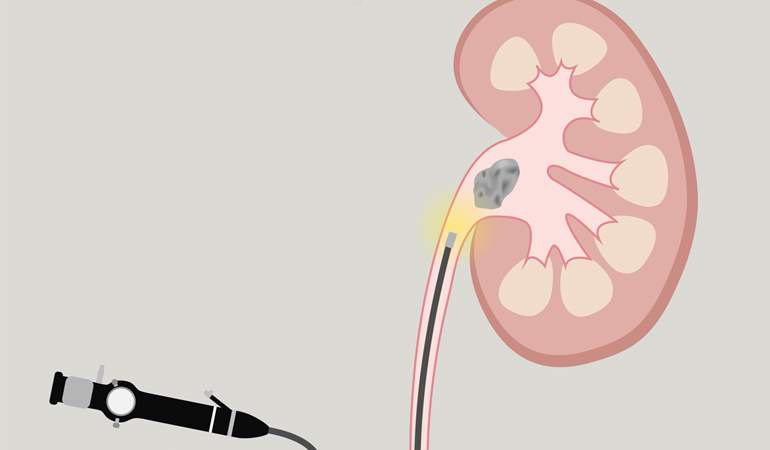Retrograde Intrarenal Surgery (RIRS) is a minimally invasive procedure used to treat kidney stones and certain other urological conditions. Here’s a detailed look at how RIRS surgery is typically performed:

Preparing for RIRS Surgery
- Patient Evaluation: Before the procedure, the patient undergoes a comprehensive evaluation, including imaging tests like CT scans or ultrasound to locate and assess the size and number of kidney stones.
- Anesthesia: RIRS is usually performed under general anesthesia, although in some cases, local anesthesia with sedation may be used.
Steps Involved in RIRS Surgery
- Insertion of the Ureteroscope:
- The surgeon inserts a flexible ureteroscope through the urethra and into the bladder. The ureteroscope is then advanced up the ureter into the kidney.
2. Navigating to the Kidney Stone:
- Using the ureteroscope’s flexible tip and imaging capabilities (usually fiber-optic or digital), the surgeon navigates through the urinary tract to reach the kidney stone. The images from the scope are projected onto a monitor for visualization.
3. Stone Localization and Fragmentation:
- Once the stone is located within the kidney or upper ureter, the surgeon may use various tools through the ureteroscope to break the stone into smaller fragments. This can include laser fiber, pneumatic lithotripsy (using bursts of air pressure), or ultrasound energy.
4. Stone Removal:
- After fragmentation, the smaller stone pieces (fragments) are either removed using a small basket-like device or allowed to pass naturally through urine.
5. Post-operative Care:
- Following the procedure, patients are monitored for a few hours to ensure there are no immediate complications, such as bleeding or infection. Pain management and hydration are typically part of the post-operative care plan.
Advantages of RIRS Surgery
- Minimally Invasive: RIRS is less invasive compared to traditional open surgery, resulting in shorter recovery times and reduced risk of complications.
- Effective for Complex Cases: RIRS is effective for treating larger or multiple kidney stones, as well as stones located in difficult-to-reach areas within the kidney.
- Preserves Kidney Function: Unlike shockwave lithotripsy (SWL), RIRS allows direct visualization and targeted treatment of stones while minimizing damage to surrounding kidney tissue.
Considerations and Potential Complications
- Risk of Bleeding: Although rare, bleeding may occur during or after the procedure, requiring careful monitoring and, in some cases, additional interventions.
- Infection: As with any invasive procedure, there is a slight risk of infection, which is typically minimized with appropriate sterile technique and antibiotic prophylaxis.
Conclusion
Retrograde Intrarenal Surgery (RIRS) has become a preferred choice for treating kidney stones and certain urological conditions due to its minimally invasive nature and high success rates. By utilizing advanced imaging and precise instruments, urologists can effectively manage kidney stones while promoting quicker recovery and preserving kidney function. As with any medical procedure, consultation with a qualified urologist is essential to determine the most appropriate treatment plan based on individual circumstances.






Comments